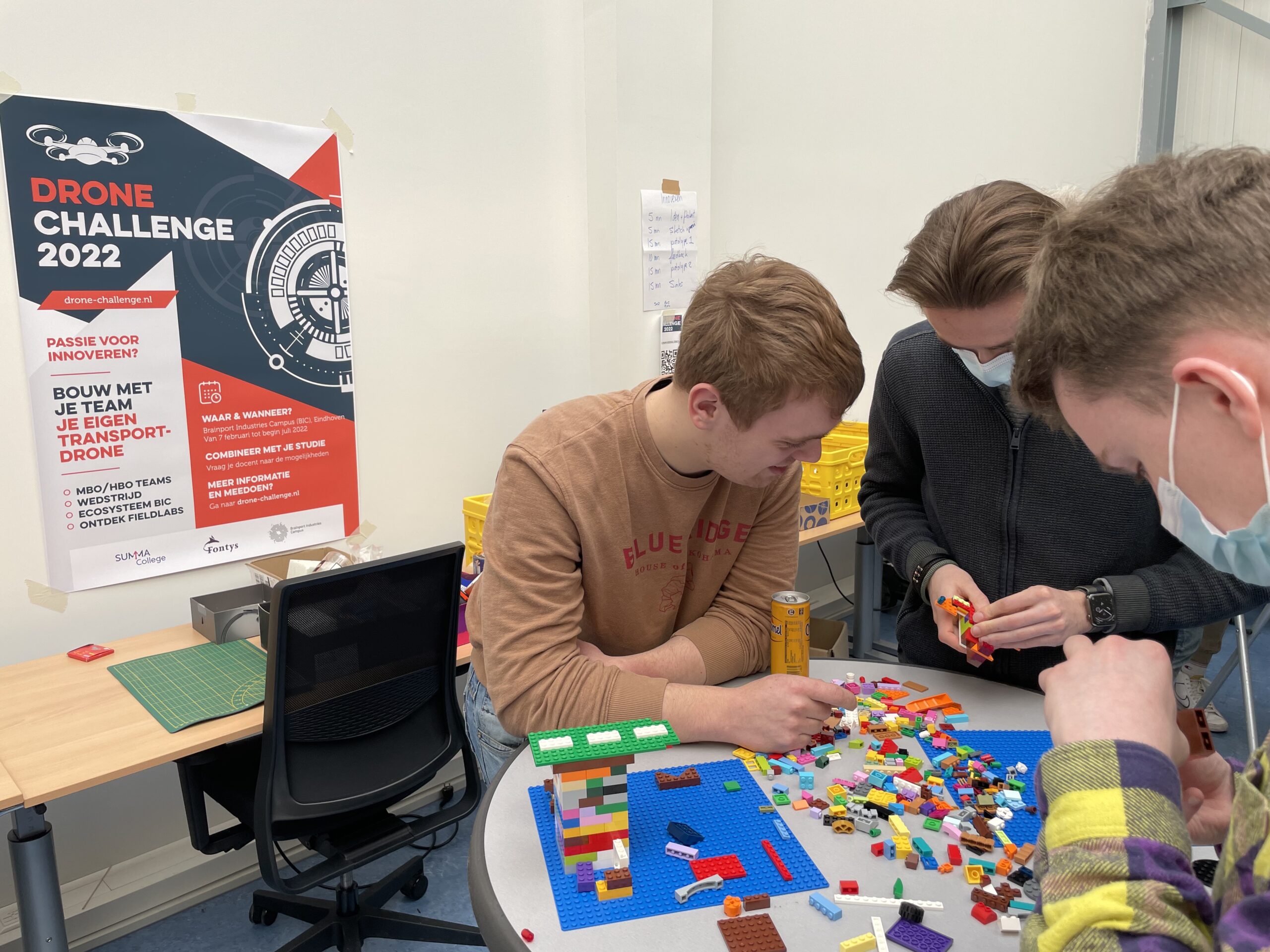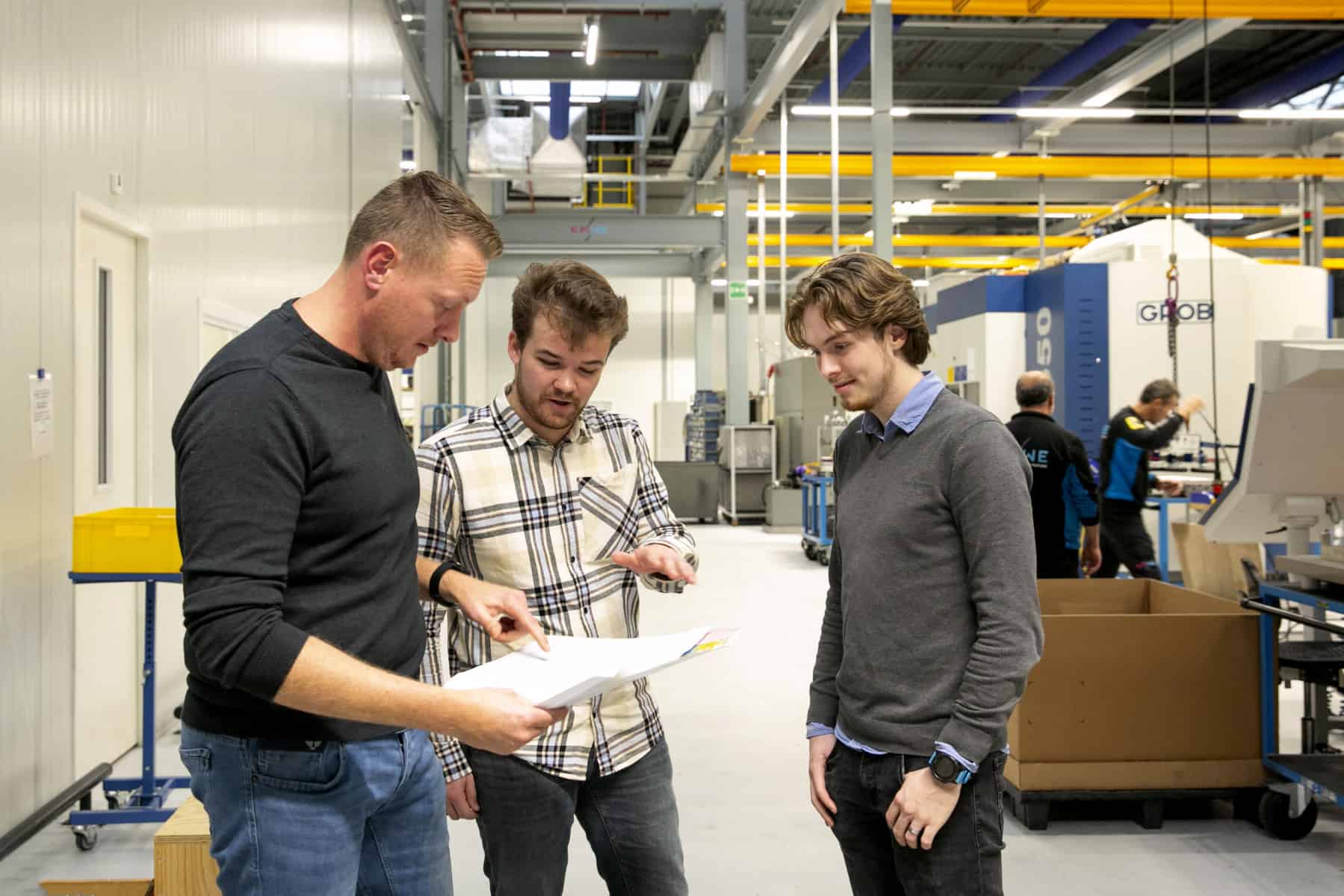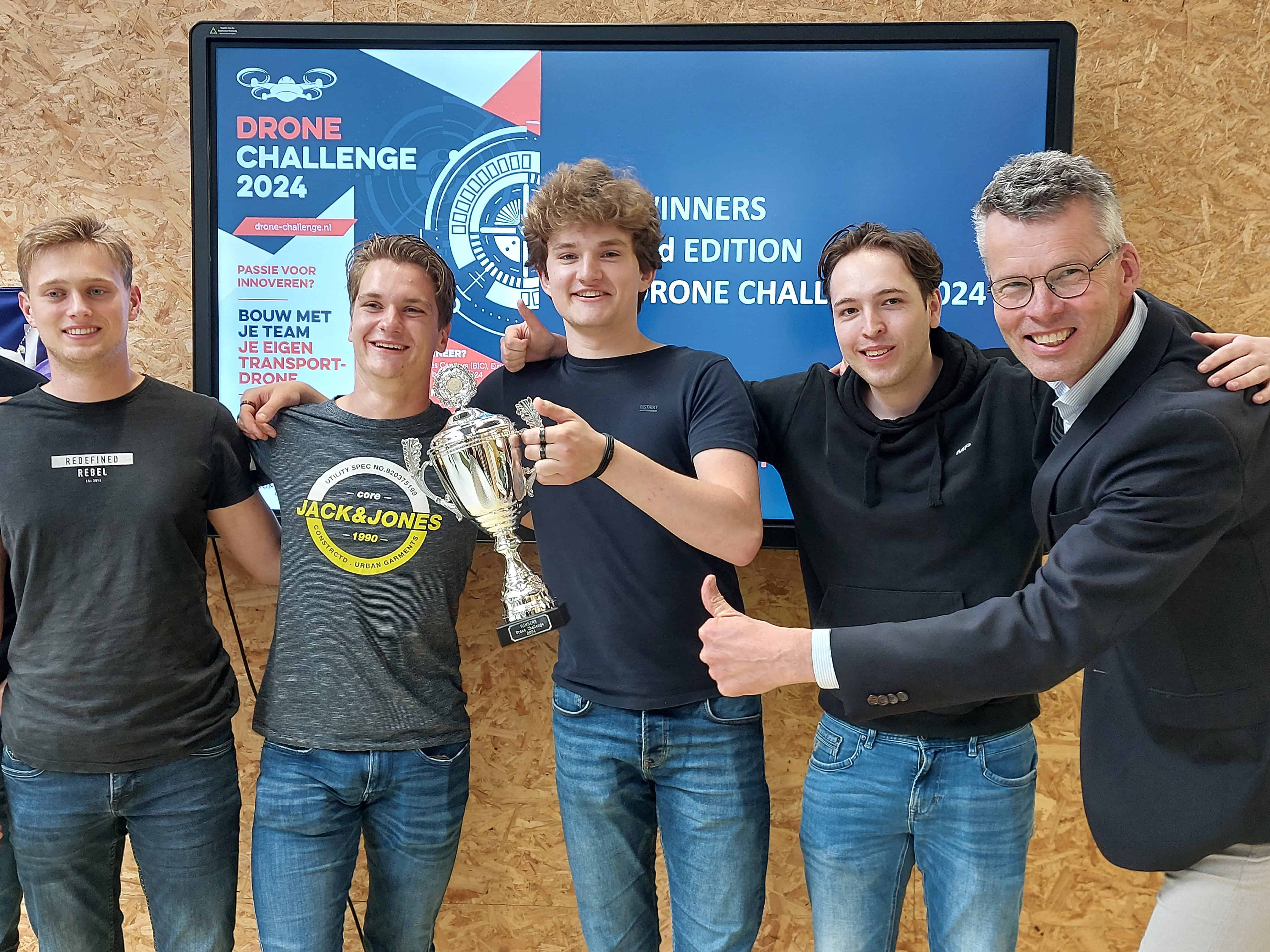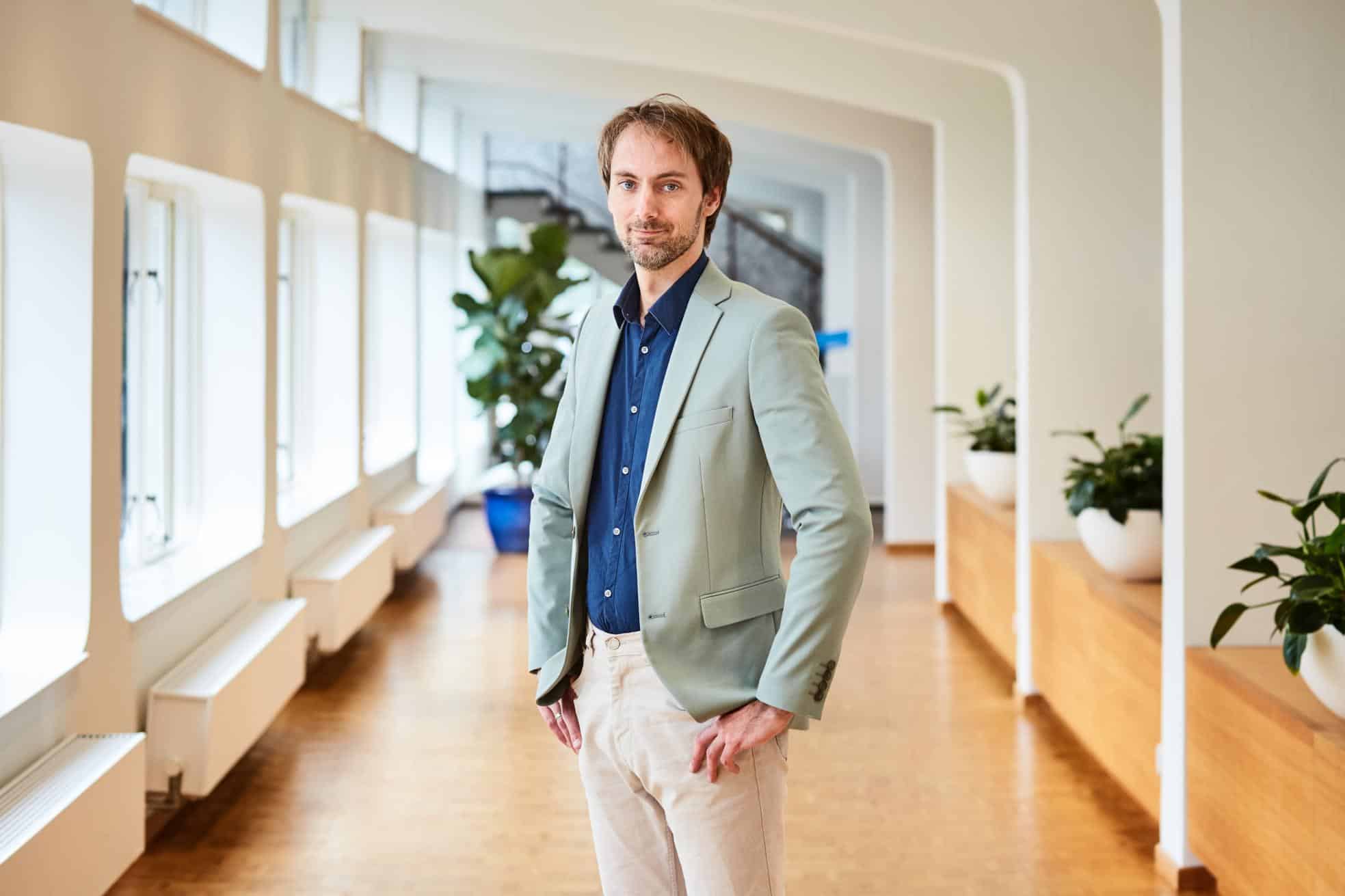
Designing a transport drone on paper that is capable of safely transporting goods is one thing. But whether it really works in actual practice is a whole other story. During the Drone Challenge, forty students from the Fontys University of Applied Sciences and Summa College will spend five months together tinkering around to develop the optimal transport drone in both theory and practice.
“The idea is that within BIC, vocational and technical university students will actively seek each other out and jointly develop something,” says Patrick Fonken, instructor at Summa. “That’s why we chose the drone challenge. This is the first step towards having an active cooperation inside the BIC.”
Transportation
He is the instigator of the challenge together with Mark Aelmans, an employee at Fontys University of Applied Sciences. Fonken: “For us, it’s not really even about drones. That we get the cooperation up and running is the most important thing. And that we learn from it for a future edition. If the students can actually build drones that haul waste, for example, that would be really cool.”
Second-year and third-year Fontys students, international students, and Summa level 3 and 4 students are all taking part. These vocational students have an additional challenge. “They work and have to plan this project outside of their work hours. That diversity makes it extra challenging.”
“We also want to establish a learning environment in which vocational and technical university students will work together with companies over time,” says Aelmans. That way of working fits in well with BIC. This is where various companies and educational institutions from the manufacturing industry are accommodated so that they can work together to create innovations for the manufacturing industry. This is done in five field labs, e.g., for robotics, information exchange in the chain, multi-material 3D printing, industrial metal printing, software, education, logistics and digitalization.
Workplace
The students are split into mixed teams as much as possible. They are building the drone all by themselves. Around eight weeks after the challenge started, the students are now working on a cardboard prototype. After that, they will buy the parts they need to physically build the drone.
A special workplace has been set up at BIC as part of Summa College, where the students can come and work on the project every day. This constitutes a home away from home for the Summa students. The Fontys Engineering students come from the grounds of the Eindhoven University of Technology (TU/e) where their program is based. Besides the special workplace, the teams can make use of all the material and machinery present at Fontys on the BIC site.
A help desk run by three Summa ict students is on site for any questions about automation. Also, there is a partnership with two of the five field labs located at BIC. Robert Wit and Jasper Sluis, from New Business Creators, will be present on Tuesdays and Thursdays to supervise the students. Wit and Sluis have been organizing similar events in the vocational training schools, tecnical and academic universities since 2012. Fonken and Aelmans enlisted them to help shape the program.
Artisanship
Fonken: “The students are provided with a range of resources to come up with a transport drone. For example, the students are given the opportunity to earn their pilot’s license so that they can safely fly a drone. We also connect them to one of the professional platforms that 2,500 other drone pilots are affiliated with. And they can choose from three standard drones.” The Summa Craft Festival will be held at the end of June. Fonken wants to challenge the teams to demonstrate their drone to the general public then. In early July, either on the 6th or 7th, is the finals day and a jury will announce which team has won.
“The funny thing is that these vocational students are learning a trade,” Fonken goes on to explain. “In terms of the work they do, these graduates often stand out from university graduates. I always think a great example is when a university student comes to us with a technical drawing. A vocational student can immediately see that the drawing is impossible to put into practice. I may be putting it in black and white terms right now. But a tech uni graduate has never learned to work with the resources on the work floor.”
“So that’s precisely a subject that we want to tackle in this challenge,” Aelmans continues. “The power of vocational training schools – being able to grasp the social engineering side of things – versus the design power of university of applied sciences.”

Lego
There is no set curriculum with goals of precisely what students need to learn, Fonken stresses. “We just get on with it. As teachers, we have to be flexible. That’s why it’s good that Robert and Jasper (from New Business Creators, ed.) are around. They have an unerring sense of what the students need and know how to captivate their attention.”
For instance, Wit and Sluis came up with various activities for the kick-off of the challenge that help the students get to know each other. An assignment to ‘build something’ with Lego in groups or a game called ‘innovate without boundaries’. For the first practical task, the pair invited a professional drone team to give the students flying lessons. Then the students have to fly an empty plastic bottle and a glass Christmas bauble from A to B by drone through a number of obstacles.
“Just give it a try”
It is part of the curriculum for the Fontys students. Students following the minor had the choice of taking part in this drone challenge or making a knee prosthesis. Student Marieke Schippers chose the transport drone. “I don’t have a specific reason why I chose this. It just seems really cool to me to be able to get something to fly.”
Summa students are participating in the challenge in addition to their studies. One such student is Rens Meijer, who is studying to become a first mechanic in mechatronics. ” A Level 3 study. After that, I would like to do level 4.” He is wondering about what is in store for him. “I thought I could just give it a try. It’s not that I have to, I just feel like it. And I like working with others. Also just to be a bit less serious and have some fun.”








